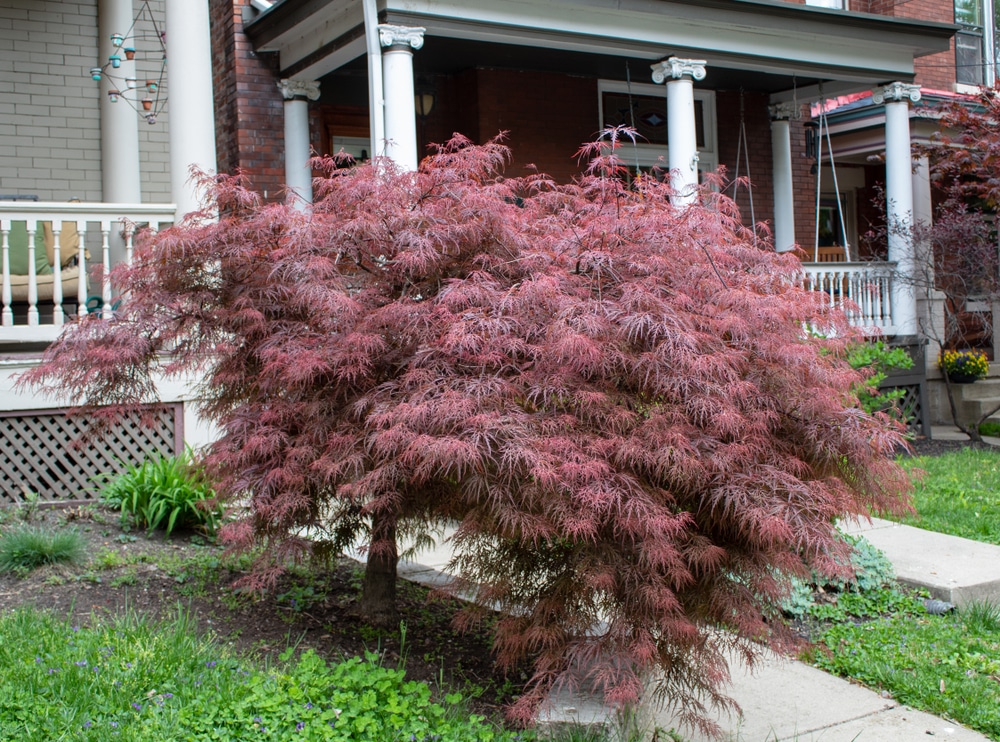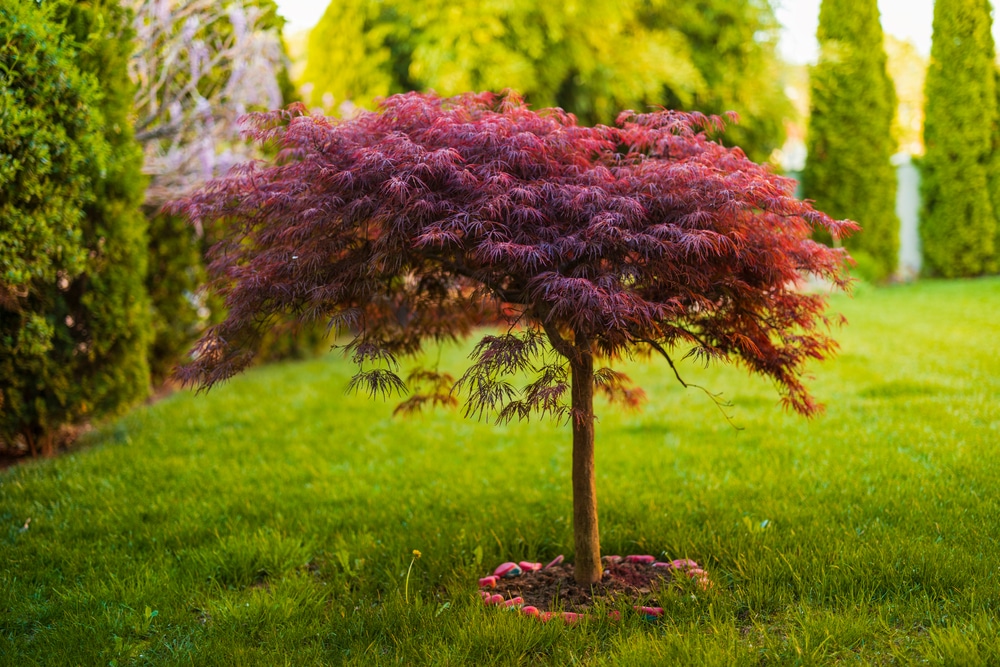The weeping Japanese maple tree is a beautiful ornamental tree that’s relatively easy to take care of. It can be an impressive addition to your home garden, but how do you take care of it? Here is everything you need to know about taking care of your weeping Japanese maple tree.
| Botanical Name | Acer palmatum var dissectum |
| Common Name | Weeping Japanese Maple |
| Plant Type | Deciduous |
| Flower Color | No flowers |
| Size When Mature | 78-120 in. |
| Bloom Time | Spring |
| Sun Requirements | Light Shade |
| USDA Hardiness Zones | Varies; ranges from Zone 4 to 8 |
| Soil PH Range | 6.2-6.5 |
| Soil Type | Slightly acidic, well-drained |
| Water Needs | Medium |
| Native Area | Japan, Korea, China |
What You Need To Know About Weeping Japanese Maple
There are several cultivars of Acer palmatum var dissectum. The weeping variety is a delicate and graceful tree that’s small and easy to manage, with dissected leaves. While these trees don’t flower, their fall colors are beautiful to behold and last for a long time.
Weeping Japanese maple trees are slow-growing and don’t require a lot of maintenance. You can find at least one of these trees in most Japanese-themed gardens. It has also become a well-liked ornamental tree in Pacific Northwest gardens.
How to Care For Weeping Japanese Maple
Here’s everything you need to know about growing and caring for a healthy weeping Japanese maple tree.
Light
In cooler regions, the weeping Japanese maple tree can grow in full sunlight. If you want to plant these trees in warmer places, they grow better in lightly shaded locations. Its leaves will burn if you leave a weeping maple tree in full sunlight during hot summer afternoons.
Water and Soil Needs
Recently transplanted weeping Japanese maples need regular watering. Keep the soil moist during the tree’s first year. You should keep a regular water schedule even after your tree has settled in your garden. It’s also a good idea to flood the tree occasionally to leach salt from the soil.
Speaking of soil, Japanese maples grow best in well-drained, acidic soil. If you grow these trees in poor soil they will grow much slower, though they will survive. Use organic acid mix fertilizer if your soil is low in acidity. You can always test your soil’s acidity levels, but employing a mix like this can help maintain your soil’s acidity levels.
Temperature Requirements
The U.S. Department of Agriculture (USDA) lists the weeping Japanese maple tree at a plant hardiness zone of 4 to 8. If you live in zones outside of this range, consider growing these trees in a pot or container instead.
Weeping Japanese maple tree leaves are delicate and will be vulnerable to extreme heat, cold, and wind. If your region is prone to winter and spring frosts, you should wrap your maple to preserve its leaves. And afternoon shade is especially important since these trees need protection from the sun during the hottest parts of the day. They will dry out if left in direct sun.
Fertilizer
You must protect your Japanese maple roots. Keep a thick layer of organic mulch over the soil to keep weeds from growing around it. You can even use dead leaves that fall from your tree. Once spring rolls around, remove this mulch before replacing it with nutrient-rich mulch.
Common Disease
Japanese maples are quite resistant to disease and pests, but they aren’t immune. One of the first things you might notice are small, round, spots on the tree’s leaves. Wilting leaves and white, gray, or black growth are also signs of a problem. Look at the base of your tree’s leaves and branches, even the trunk, for black lesions or dark streaks through the bark.
Regular pruning and proper watering work well as preventative measures. Only water your tree at the base of it, and only water at night or early in the morning. If your tree is wet during the warmer parts of the day, it can become an easier target for disease. You don’t have to use fungicides for these issues, but if you do, you should use less toxic products. Neem oil is a good option if you don’t want to damage your tree.
With regular pruning, make sure that you are pruning during the fall or winter when the weather is dry.
Weeping Japanese Maple Propagation
While propagating a weeping Japanese maple can be time-consuming, it’s simple enough to do at home. You will want to start this process during the spring when the tree’s branches are soft and pliable.
- Fill a container with potting soil, and make a 4” deep hole in the center.
- Find a good cut from your weeping Japanese maple. It should be about 6” long with leaves at the end. Use a pair of sharp shears for a clean cut.
- Remove any other leaves on the branch that aren’t the ones at the end.
- Soak the cutting in liquid rooting hormone for about a minute.
- After soaking, insert the cutting into your prepared soil, and set it up somewhere sunny.
- Mist the cutting twice daily. In about 3-4 weeks, the branch should start to sprout roots.
Your cutting should remain in a pot for about a year. Once spring comes around, and temperatures aren’t freezing, you can plant your tree into the ground. Be sure to care for your tree as detailed above once you have your tree settled in your garden!


